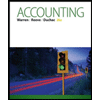
Concept Introduction:
Income statement as per IFRS: The income statement shows details of net revenue, expenses and profit for the period. As per IFRS the expenses have to disclosed separately for income tax, finance costs and other costs
Multiple-step income statement: The Income statement where the details computations of net sales, expenses and costs, the sub totals of each class of items is shown separately
Single − step income statements: The income statement where totals of net sales, expenses and costs, net sales, expenses and costs, are shown. The expenses can be shown by their nature and function
Requirement I :
To Compute :
The Valleys Company net sales for the year ended August 31,2015
Requirement II :
To Compute :
The Valleys Company total cost of merchandise purchased for the year
Requirement III :
To Prepare : a multiple-step income statements for the year ended August 31,2015
Requirement IV:
To Prepare: A single-step income statement for the year ended August 31, 2015
Want to see the full answer?
Check out a sample textbook solution
Chapter 5 Solutions
FUNDAMENTAL ACCT PRIN TEXT+CONNECT CODE
- On January 1, 2025, Fisher Company makes the two following acquisitions. 1. 2. Purchases land having a fair market value of $800,000 by issuing a 5-year, zero-interest-bearing promissory note in the face amount of $1,175,468. Purchases equipment by issuing a 4%, 8-year promissory note having a maturity value of $350,000 (Interest payable annually on January 1). The company has to pay 8% interest for funds from its bank. (a) (b) Record the two journal entries that should be recorded by Fisher Company for the two purchases on January 1, 2025. Record the interest at the end of the first year on both notes using the effective-interest method. (Round present value factor calculations to 5 decimal places, e.g. 1.25124 and the final answer to O decimal place, e.g. 58,971. If no entry is required, select "No Entry" for the account titles and enter O for the amounts. Credit account titles are automatically indented when the amount is entered. Do not indent manually. List all debit entries…arrow_forwardQuestion Accounting-Cash conversion cycle: Pem Corp. has an inventory period of 22.6 days, an accounts payable period of 37.7 days, and an accounts receivable period of 31.9 days. What is the company's cash cycle? Need answerarrow_forwardQuick answer of this accountingarrow_forward
 Financial Accounting: The Impact on Decision Make...AccountingISBN:9781305654174Author:Gary A. Porter, Curtis L. NortonPublisher:Cengage Learning
Financial Accounting: The Impact on Decision Make...AccountingISBN:9781305654174Author:Gary A. Porter, Curtis L. NortonPublisher:Cengage Learning Financial And Managerial AccountingAccountingISBN:9781337902663Author:WARREN, Carl S.Publisher:Cengage Learning,Century 21 Accounting Multicolumn JournalAccountingISBN:9781337679503Author:GilbertsonPublisher:Cengage
Financial And Managerial AccountingAccountingISBN:9781337902663Author:WARREN, Carl S.Publisher:Cengage Learning,Century 21 Accounting Multicolumn JournalAccountingISBN:9781337679503Author:GilbertsonPublisher:Cengage Cornerstones of Financial AccountingAccountingISBN:9781337690881Author:Jay Rich, Jeff JonesPublisher:Cengage Learning
Cornerstones of Financial AccountingAccountingISBN:9781337690881Author:Jay Rich, Jeff JonesPublisher:Cengage Learning Accounting (Text Only)AccountingISBN:9781285743615Author:Carl Warren, James M. Reeve, Jonathan DuchacPublisher:Cengage Learning
Accounting (Text Only)AccountingISBN:9781285743615Author:Carl Warren, James M. Reeve, Jonathan DuchacPublisher:Cengage Learning





